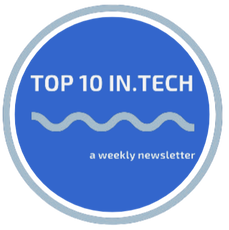Top 10 in Tech - What to know for Week ending March 26, 2021 - State of The Cloud Special!3/23/2021
One of my favorite sessions to attend every year at SaaStr is the Bessemer Venture Partners State of the Cloud Report. It's a fantastic, detailed, deep dive into micro and macro trends, forecasts, and industry predictions. This year SaaStr release was a Cloud edition but here are the Presentation files and link to the full presentation page on their website - or if this is your thing: The PDF version. They also finish off with top predictions for 2021 (which I feel we already did to death here - so that part is skipped - here if you want to read more - because it's good)
POD OF THE WEEK: The 45 minute long Bessemer Venture Partners State of the Cloud report or alternatively check the SaaStr Podcast share the latest trends and predictions for the cloud marketplace.
POD OF THE WEEK: Stripe just raised a new round (remaining private) - so here is a little blast from the past via the How I Built This Podcast on how a couple of Irish Brothers built a business now valued at $95 Billion (which is 2.6x the amount they were valued at this time last year).
POD OF THE WEEK: This is a cool retro one (a blast from the 2016 past) - The founder of Yammer (my old alma mater and OG Unicorn) and Slack (my old neighbors) get together to talk Unicorns or Bust (this is way before Slack took off
POD OF THE WEEK: “Jobs to be done” adding on to #4 above - it isn’t a phrase, it’s a methodology for getting stuff done - listen more on the concept here. |
|
